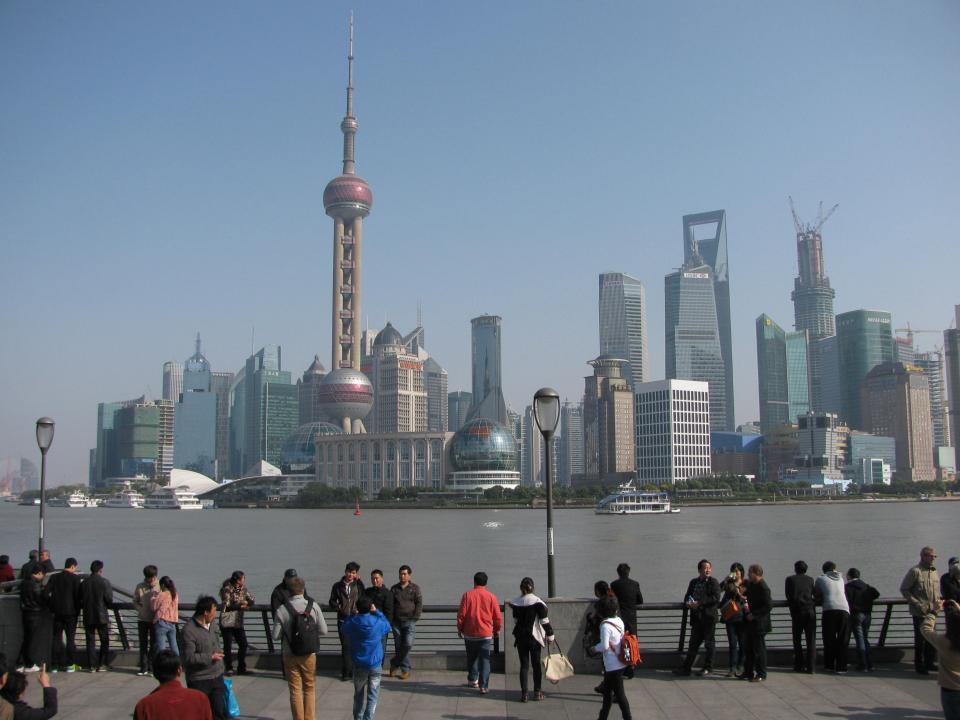The first of two thought pieces by Rod MacKenzie, former regional director, Greater China, New Zealand Trade & Enterprise.
The world is slowly sinking under the sheer volume of information about consumers in China. Working out what’s actually relevant to New Zealand in amongst all of this is both something of an exacting science and an art at the same time. Complicating things in this respect is that everything matters – but some things matter a lot more than others. Here’re a few examples.
The big picture stuff in China tends to sound a bit heady from the perspective of a country a mere 308th the population size, but at one level at least it shouldn’t be ignored.
Growth in China is slowing. Well, it’s not ripping along in the double digits anymore but does it really matter that it’s moving around in the upper seven percent range? From New Zealand’s viewpoint not much. There are still more than enough people with increasing amounts of discretionary cash to purchase anything that NZ can cough up.
There’s a crackdown on corruption and obvious consumption. This is a little more interesting for a country that exports lobster, abalone and other products that could possibly be connected with bloated bureaucrats entertaining themselves. In reality though, while it might be giving Rolls Royce and Chateau Lafite some pause for thought there’s still a lot of crayfish being eaten - just perhaps not quite as ostentatiously. It’s worth noting too that, despite this, sales of French red wine, a compulsory ingredient in a truly swanky banquet, have just reached another high point in China. Baiju on the other hand, the gift of choice for ingratiating yourself to those in power, and a first cousin to embalming fluid, has experienced a drop in sales that must be giving its producers nightmares.
Air pollution has reached the point where you could just about drop the word “air” and have a more accurate description. Now this is of interest for a number of reasons. Never mind “100% Pure New Zealand”. How about “If you want to breathe get down here!” If there isn’t an increase in tourist numbers emerging out of the filthy muck that’s sending everyone demented in just about every main Chinese city, then someone’s not doing their job.
The pollution is also having a marked effect on people’s awareness of everything related to environmental health. The feeling of restlessness evolving into virtual rebellion is starting to become quite tangible. New Zealand environmental technologies take note.
China can’t feed itself. Big picture maybe. but here’s something that really does matter for New Zealand. What’s more, not only will it struggle to feed itself but the Chinese don’t trust the food that their own country produces. A year or two ago this was number two on the list of the things people were most concerned about (top of the list was official corruption). I suspect the environment might have shifted the order around a bit but you can bet food safety and security are at the front of many minds.
Despite New Zealand’s dogged attempts to shoot itself in both feet on this topic there is still a very real and valuable platform for food and beverage companies to build on in China. Admittedly some consumers are still a little gun-shy when it comes to infant formula but in general the spectres of melamine, dicyandiamide (DCD) and, more recently, botulism have started to fade from memories. Let’s please not have another one anytime soon though and if we do, as we probably will, let’s please get our act together.
Discretionary income is increasing dramatically amongst a resurgent middle class. This is getting much closer to being very important for New Zealand. There are many aspects to this which require far more examination than this short article can give them but some critical questions to consider are (i) where is this occurring; (ii) just who is this so-called middle class with discretionary income; and (iii) what motivates them to actively seek out the sort of things that New Zealand produces.
The discretionary spending money in China is gravitating, unsurprisingly, heavily towards the tier one cities with Shanghai firmly in the vanguard - but losing some of its lead to Beijing and Guangzhou amongst others. These are tough cities to do business in though and not just because they’re targeted by every other exporting business in the world.
As it is for everyone else Shanghai is a market that has to be considered seriously, but from a New Zealand perspective the tier two cities are worth a long hard look. There’re plenty of them but for my money the cities surrounding Shanghai head the list – Hangzhou (which is virtually a tier one city these days), Ningbo and Wuhan to name just three. For those with a slightly bigger appetite for adventure, Chengdu and Chongqing are also contenders but the further West you go the less familiar everything becomes to those unacquainted with the Chinese way.
Targeting the consumers with the money, aka the growing middle-class, is a lot trickier. Urban-dwelling certainly, and demographically largely on the younger side of 40 with professional occupations, but beyond that this is a category that is argued over constantly by academics with IQs much greater than mine. Perhaps more to the point is the question of what these people want and what they do to get it.
The concept that anyone under 40 has known nothing but improving times in China is a very appealing one. There’s a genuine optimism and devil-may-care attitude amongst the younger generation in China that stems from many sources - a lack of a severe recession in living memory is definitely one of them. By contrast the conservatism of those old enough to have lived through the mother of all depressions is very marked.
Experimentation is a characteristic behavior as a direct result of this. Boundaries removed by the access to cash and the lifting of many restrictions clearly have had a wildly liberating effect. Experimentation, it must be said though, is the enemy of brand builders and so along with the willingness to try new things comes a dilettantish attitude to brand loyalty. Category building however, e.g. wine, becomes much easier when your target consumer is prepared to have a shot at just about anything.
It’s not as easy as that of course. The risk takers in China are by far and away young, professional, urban women. This is the group that will risk going to a western-style restaurant and ordering western-style food from a western-style menu. Their men would be far too afraid of losing face by ordering the wrong thing.
Similarly it is young women that will try Sauvignon Blanc despite the fact that their elders would be mixing it with Sprite if they tried it at all. Chinese men, if they have a go at wine at all, will gravitate towards red wine and preferably with a French name and a picture of a mouldy old chateau on the label. This will take quite a long time to change.
All of the above barely scratches the surface of what matters and what doesn’t for New Zealand in China. The point is, really, that this is a market that deserves very careful and patient analysis before taking the plunge. And once you’re in you can’t stop that watchfulness because things change all the time, and fast.
And at the end of the day everything matters. Working out which matters more than anything else is the tricky bit.





